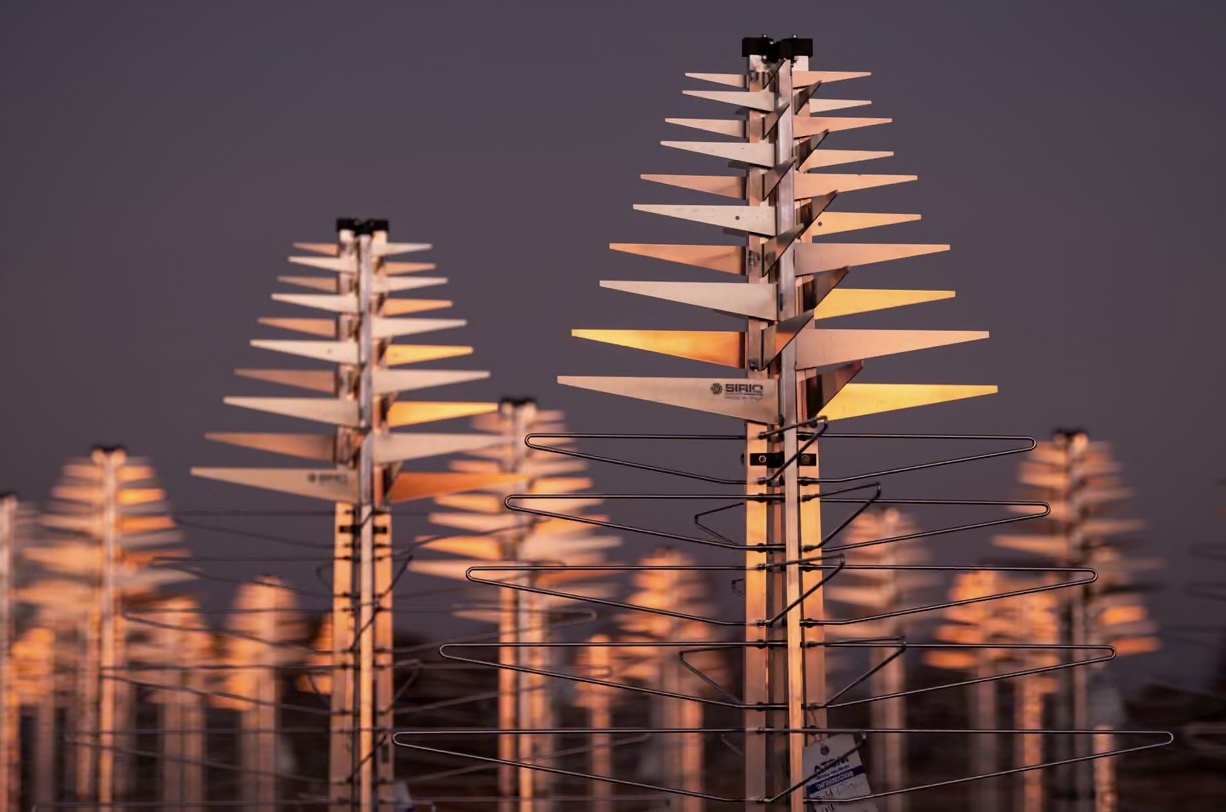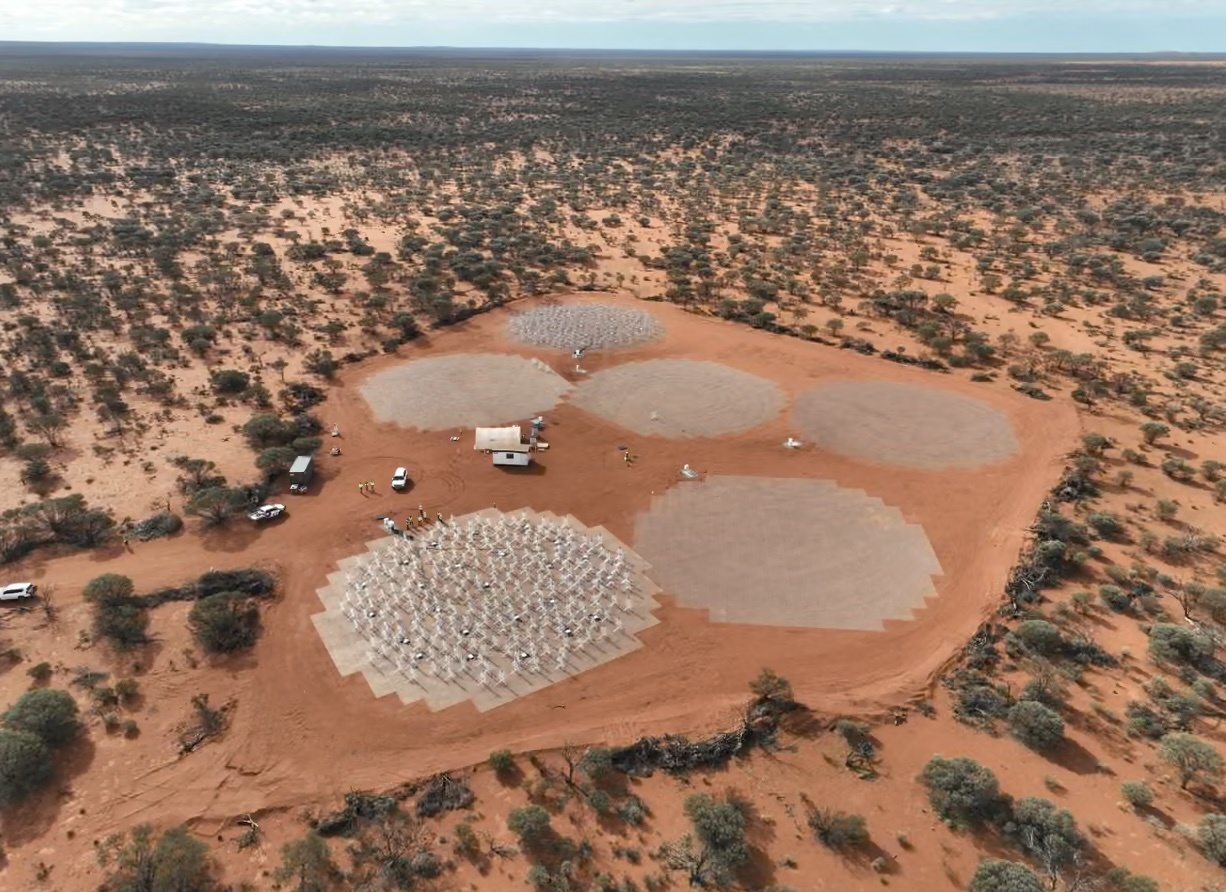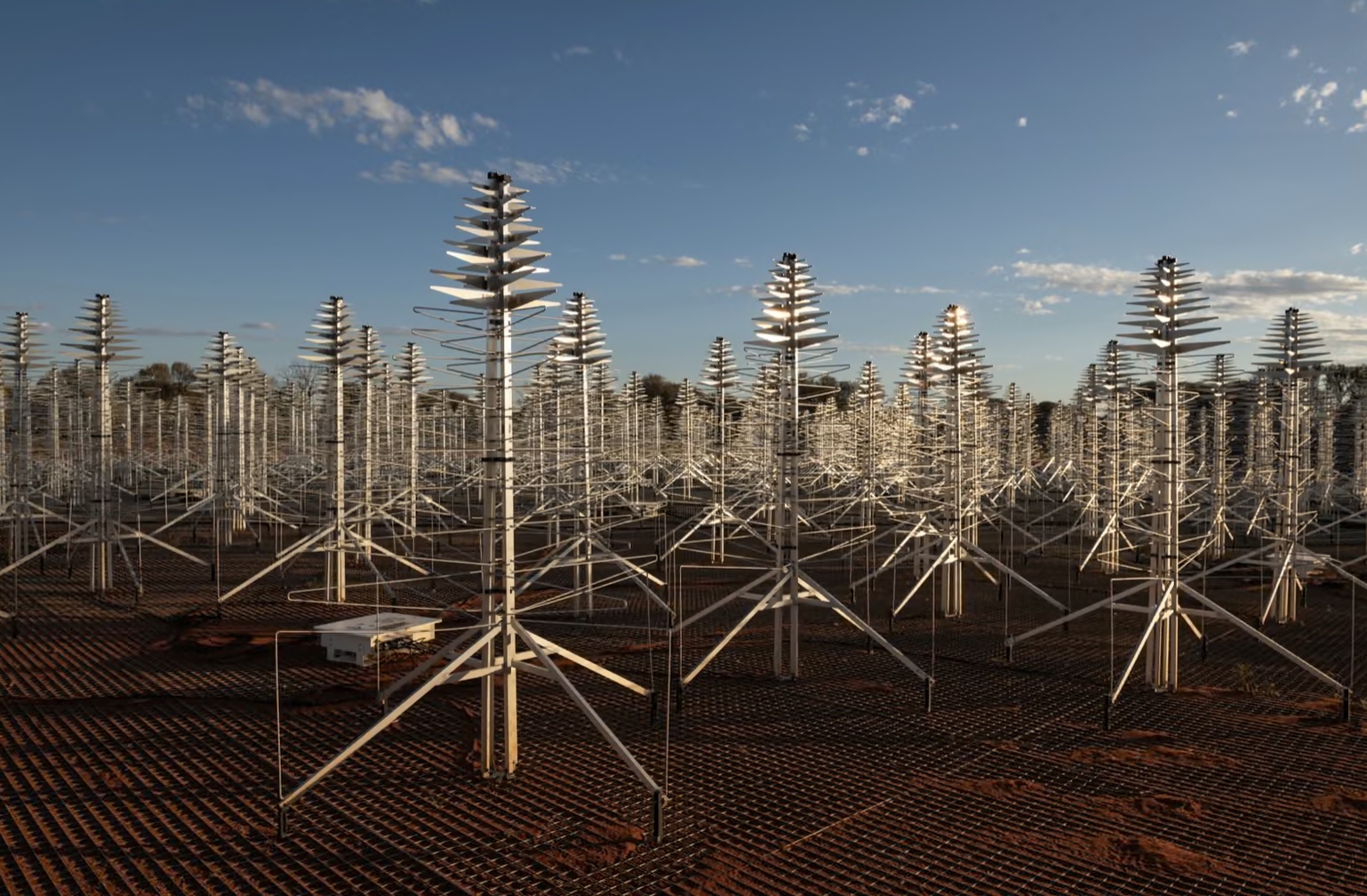24.08.2025
The organisation that manages the Square Kilometre Array Observatory has denied whistleblower allegations of financial mismanagement

The SKAO’s antennae resemble metal Christmas trees scattered across the desert. Photograph: SKAO/Max Alexander
It is hailed as a global endeavour to explore the hidden universe – a powerful telescope comprising more than 130,000 antennae being built in outback Western Australia.
Along with a sister telescope in South Africa, the Square Kilometre Array Observatory is a €2bn (A$3.6bn) project tasked with mapping the first billion years of the universe.
One day, the SKAO’s antennae – which look like metal Christmas trees scattered across the desert – could confirm the existence of extraterrestrial life, prove Einstein’s theory of relativity and explain how galaxies have evolved over time.
But while the venture is being lauded as one of the most significant scientific endeavours of the 21st century, the Guardian can reveal that the organisation managing the funds of 16 member states has been rocked by allegations of financial misconduct.
The organisation has denied any wrongdoing.
The Australian government contribution to the SKAO has blown out by more than $150m from 2020 to 2024 compared with its initial budget, with the additional expenditure partly attributed to funding shortfalls for the project
In March this year, as the telescope in Australia captured its first images of faraway galaxies using just 1% of its capacity, a former senior employee of the project was filing a “protected disclosure” report calling for an investigation into the SKAO’s financial management.
As an intergovernmental organisation, the Square Kilometre ArrayObservatory is not subject to national laws or regulatory oversight in Australia where the employee is based, so the complaint went directly to the organisation’s global chair, the Italian astrophysicist Filippo Maria Zerbi.
The concerns outlined in the disclosure had previously been raised with senior staff internally.
In response to the whistleblower’s report, an email from Zerbi – sent in May 2025 and seen by the Guardian – confirms the organisation is conducting an external independent evaluation of the litany of allegations made against it.
The email states that the chair is taking “all necessary actions” in response to the concerns raised, and given the volume of disclosed information, “further external and independent investigation into specific elements is necessary before reaching any conclusions and proceeding with the next steps”.
The whistleblower has also raised concerns with the financial reporting council in the UK where the SKAO is headquartered, claiming the structure of the organisation had created a “regulatory blind spot” that had allowed for the “systematic deception of 16 sovereign governments”.
The Square Kilometre Array Observatory was established by an international treaty in 2019, endowing it with special legal status; it is immune from normal legal processes and exempt from paying tax. International staff employed on the project in Australia are hired on diplomatic visas.

A bird’s eye view of two completed stations in June 2024. The SKAO is not subject to national laws or regulatory oversight in Australia. Photograph: SKAO
While the UK and Australia are majority shareholders in the project, the total financial contributions of each member nation are not disclosed.
The Australian government announced in 2021 that it would contribute $387m to the SKAO over a decade for the construction and operation of the telescope, with $141m committed over the four-year forward estimates.
At the time, the then prime minister, Scott Morrison, said the project would “help our scientists make more discoveries than we can imagine today, whether it’s better understanding the origin and future of our stars and galaxies, to how gravity works across the universe”.
Portfolio budget statements for the Department of Industry, Science and Resources published since show the total amount spent is substantially more than this, with a total spend of $475m from 2021 to 2025.
A department spokesperson said the additional spending included Australia’s member state contributions to the SKAO Observatory and “Australia’s other commitments to the SKA project, including investment in the Australian SKA Regional Centre and site readiness and local communities”.
“Part of the investment is also leveraging the Australian SKA site’s fibre optic connection to provide connectivity for two communities nearby to the site – the Pia Wadjarri Remote Aboriginal Community and the Murchison Settlement,” the spokesperson said.
The amount spent between 2020 and 2024 was $164m more than initially budgeted in 2020.
The spokesperson said there had been changes to the administered budgeted expenses for the SKA project “due to fluctuations in foreign exchange rates, adjustments to economic parameters, and the reprofiling of funds as part of regular updates to budget estimates”.
In the 2025-26 budget, the government announced an additional $47.9m in the budget’s contingency reserve “to address funding shortfalls for the SKA project” alongside other member nations.
In response to the disclosure, a copy of which has been seen by the Guardian, Zerbi has initiated an investigation into claims that public funds from member states have been lost through trading accounts – and then covered up by the organisation through the shuffling of funds internally.
At the centre of the misconduct allegations is a claim that at least £12m (A$25.1m) was lost through investment in three money market funds, with one fund allegedly losing 45% of its value. The Guardian has seen balance sheet extracts and statements that appear to confirm the investments by the SKAO, which is headquartered at the Jodrell Bank Observatory near Manchester.
The report also calls for an investigation into claims funds are being shifted within the organisation, and currency fluctuations being fabricated to conceal these losses from the governing council overseeing the project.
A spokesperson for the SKAO denied the allegations, but confirmed it was “assisting an independent, external investigation” into them.
“No capital loss has been incurred in these investment holdings. Money market funds are inherently low-risk, highly liquid investments and were selected for SKAO’s investment portfolio for this reason,” the spokesperson said.
“Any reduction seen in the investment balances relates to amounts being redeemed (withdrawn) from the investments to support SKAO’s normal cash requirements, for example to pay suppliers and staff salaries.”
“SKAO follows recognised best practice, and its financial activities and reports are subject to rigorous internal audits and independent external audits which are reported to Finance Committee and Council. No adverse findings of note have been reported.”

Portfolio budget statements reveal the Australian government contributed $475m between 2021 and 2025 towards the SKAO. Photograph: SKAO/Max Alexander
Other complaints detailed in the whistleblower’s report include allegations that procurement budgets have been mismanaged, leading to delays and change in scope.
One example is the project’s failure to build a permanent power supply to the telescope at the Australian site, which is now being run on temporary diesel generators.
The SKAO website claims power for the project’s central processing plant “is provided by a photovoltaic plant [solar] and energy storage system backed up by diesel generators, generating renewable energy a majority of the time to power the antennas and all site infrastructure”.
However, no solar plant has yet been built. The project is yet to award a tender for the power plant and is allegedly spending more than $1m a year on diesel to power the plant.
A tender document published by the SKAO in March reveals that a “phase one” diesel-operated system for the site is “expected to be operational in early 2026”, with the tender seeking interest to build a “phase two” power plant to integrate renewable energy.
